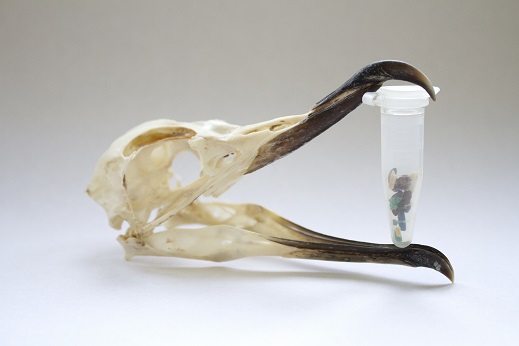Category Archives: Research Programs
CEI Research Team presents at conference in Abaco
Last week, researchers from The Cape Eleuthera Institute traveled to Abaco for the 7th Biennial Abaco Science Alliance Conference (ASAC) hosted by Friends of the Environment. Over the course of two days, posters and presentations alike highlighted research findings in natural history and environmental science in The Bahamas. Drawing a diverse audience with scientists from The Bahamas to as far as Canada, local community members and high school students from Abaco, the conference provided a forum for sharing scientific knowledge on the diverse ecosystems of The Bahamas.

Dr. Owen O’Shea, Research Associate for the Shark Research and Conservation Program, gave an engaging presentation on the ongoing stingray research project at CEI and ecosystem-driven approaches to conservation. Candice Brittain, Applied Scientific Research Department Head, spoke about the recent assessment of the queen conch nursery ground in South Eleuthera. Her presentation was followed by a workshop on conservation of queen conch in The Bahamas, led by the Bahamas National Trust. Georgie Burruss, Research Assistant for the Flats Ecology and Conservation Program, presented new findings on marine debris in the Exuma Sound and plastic ingestion by pelagic sportfish. She also gave a talk on studies conducted by the Flats Program that have aided in developing the Best Handling Practices for bonefish and protection of critical bonefish habitat. Finally, Eric Schneider, graduate student at University of Illinois Urbana-Champaign, presented research he conducted at CEI on temperature change effects on juvenile and adult schoolmaster snapper.
ASAC provided a unique opportunity for networking between the local community, students, and researchers for sharing knowledge on ecosystems across The Bahamas. Researchers from CEI look forward to attending ASAC in 2018!
Lionfish: Island School’s favorite dish!
The invasion of lionfish on reefs of the West Atlantic has become an issue of critical concern. With eradication not possible, the silver lining is that lionfish are delicious. The You Slay, We Pay campaign was launched by Dr. Jocelyn Curtis-Quick to support the development of a local lionfish market in The Bahamas. The Island School bought lionfish from local Bahamian fishers to consume in the dinning hall.

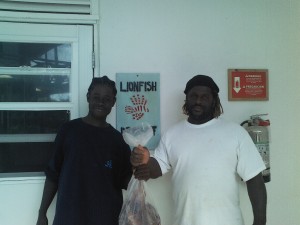
The slayer campaign initially ran through lobster closed season in 2014, as this is the time of year that many fishers will switch to conch harvesting, which is less lucrative as a fishery and increases pressure on the already overfished species. This trial lionfish season was so successful that in December of 2014 (during the closed grouper season) the lionfish You Slay, We Pay was launched all year round. Over 1500 lbs of lionfish were brought in throughout 2015, with new fishers joining regularly and more lionfish meals being enjoyed on campus. We hope that 2016 sees even more lionfish removed from the reefs and on the plate.
Inland Ponds Update: Two species of critically endangered cave shrimp found in Eleuthera
Over two semesters Dr Jocelyn Curtis-Quick and Alexio Brown led an Island School Research class focused on exploring and assessing the inland ponds of Eleuthera. These inland ponds are fragile and are under threat from human disturbance, but are rarely visited and poorly studied. The students assessed 16 sites across Eleuthera; 69% of the ponds were impacted by humans. In the few non-impacted sites, species that are new to Eleuthera were found.
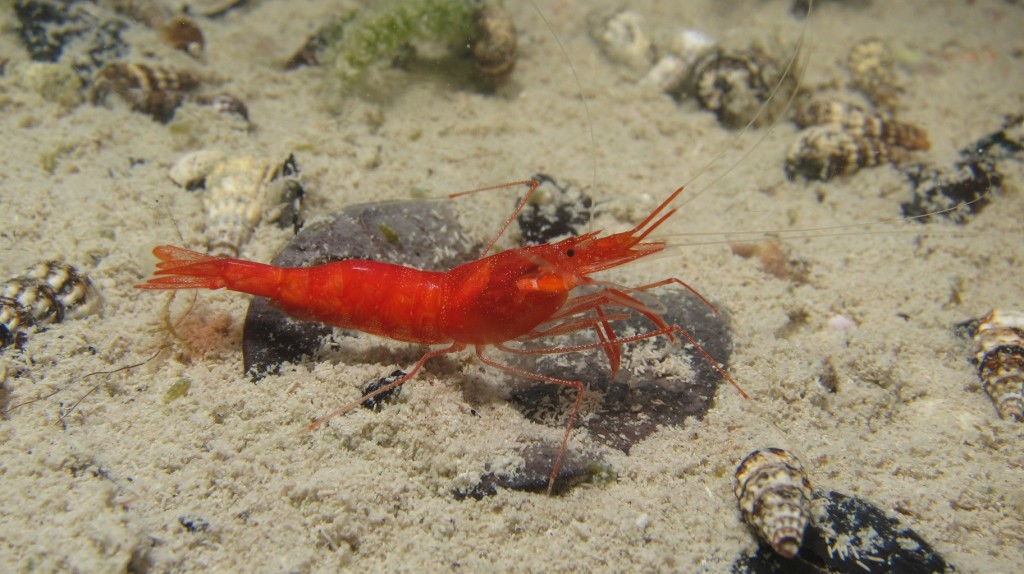
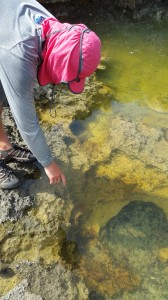
Just last week, expert Professor Mary Wicksten of Texas A&M University confirmed Eleuthera is home to not one but two species of critically endangered cave shrimp, Parhippolyte sterreri and Barbouria cubensis.This further highlights the need for immediate conservation of the anchialine systems in order to protect this unique habitat and the life it supports. The ponds project is a new and exciting area of research for CEI. Dr Jocelyn Curtis-Quick presented the research at the 3rd International Symposium on Anchialine Ecosystems in 2015, and two of The Island School Bahamian students will present at the Abaco Science Alliance and the Bahamas National Natural History Conference in 2016. We hope to create awareness for this unique ecosystem and ensure its protection.
Conch nursery project update
This semester, the Sustainable Fisheries Team has been surveying the waters of South Eleuthera in search of juvenile queen conch. In 1993, South Eleuthera had the largest surveyed juvenile conch nursery in The Bahamas.
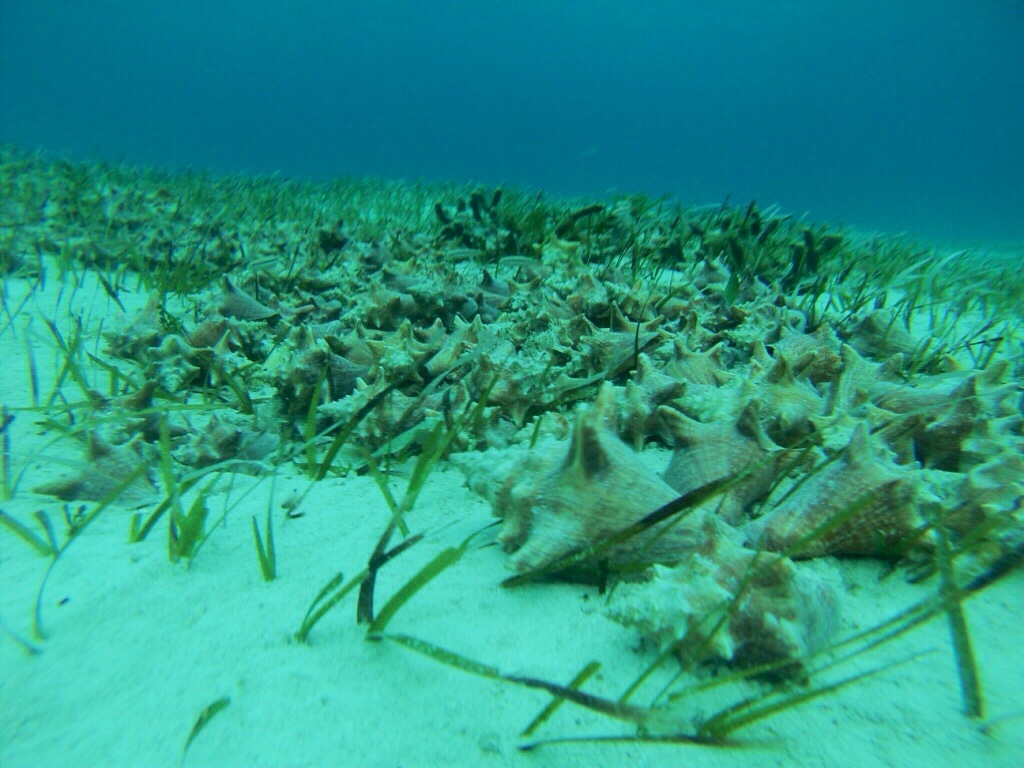
An aggregation of juvenile queen conch piled on top of each other in South Eleuthera
On the seashores of The Bahamas, it is common to see conch middens, or large piles of discarded conch shells. When fishermen return from their fishing trips, they take the fleshy meat from inside the shell and then throw that shell away. Recent conch shell midden data shows a significant increase in the harvest of juveniles. In South Eleuthera, 49.2% of the conch shells in one local midden are characterized as juveniles (lack of a flared lip).There has also been a significant decline in the number of adult conch mating aggregations in South Eleuthera.
Understanding if there is still an important juvenile conch nursery in South Eleuthera will help determine the current status of this economically and ecologically important species. Using methods created by researchers at the Shedd Aquarium, snorkelers are towed behind a boat on a manta-tow board with a Gopro attached. Images are taken continuously to document the number of conch, life stage and habitat type throughout the tow. The images are then pieced together to create a visual map of the tow. This methodology allows a rapid, accurate assessment of conch, and also documents the habitat types conch are being found in. The depths and temperature are also recorded for each tow.
During many of the surveys, only a small number of queen conch were observed, and in some tows no conch were found. But, recently, a high density of juvenile queen conch was discovered. These findings could help inform future sustainable harvesting strategies and conservation management for queen conch.
Our partner, the Shedd Aquarium, have a research team that is currently conducting further research to investigate the dispersal of conch eggs throughout the oceans currents. This further research is vital for understanding the full life cycle of queen conch and the locations of important habitats for this species.
We recommend that you only harvest conch with a fully flared lip with at least a 15mm thickness. This is when conch is considered sexually mature and can reproduce. It is important that species are able to reproduce before they are harvested, otherwise populations will most likely crash and possibly become endangered or even extinct.
Oh Happy Day!
The Sea Turtle Research team held an in-reach for local staff on Tuesday, December 1. Local staff members who had never gone “turtling” before, and many who had never seen a sea turtle, were given an opportunity to visit one of the research team’s study sites, Starved Creek, in order to catch turtles. The aim was to have everyone at least see a green sea turtle in its natural habitat.
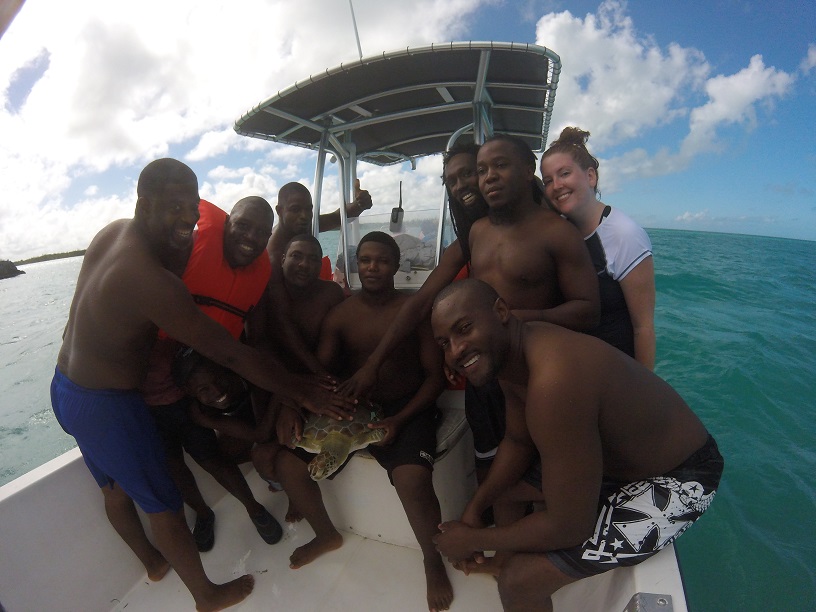
During the day, the staff members came out in two different groups. In the morning, the Facilities team came out and this was when we caught our first and only turtle of the day! For someone who has never caught a sea turtle before, or even for someone who has, it is not debateable that Arlington has the most graceful technique for catching turtles. Once Arlington surfaced with the turtle, the entire boat erupted in cheers! Johnny, who was a bit apprehensive about coming along to catch turtles, turned out to be the most excited person on the boat! There was a point where all his fears disappeared and he looked as though he was going to jump in the water and catch the turtle himself! Once the turtle was caught, the entire boat broke out in singing and dancing, as Johnny lead the boat in the chorus of “Oh Happy Day!”

The second group that came out in the afternoon consisted of the Accounting Team. Although this group came mere inches from catching a turtle, they were not able to do so. Yes, sea turtles are indeed very efficient swimmers! Chasing this turtle, however, had the boat filled with a mixture of elated, excited, enthusiastic, and adrenaline-pumped individuals who, put simply, were revelling in the experience.
The sea turtle in-reach experience was a successful one and truly one of the best ways to conclude the final days of the semester. It was refreshing to share knowledge and excitement with our extended family, who are so genuinely appreciative to be a part of the research. It was undoubtedly our pleasure to give our local staff a “Happy Day.”
Final Earthwatch team of 2015!
The Cape Eleuthera Institute Sea Turtle Research and Conservation team finished off an awesome year of Earthwatch trips with the 8th and final Earthwatch team of 2015. Participants from the US, the UK, and Canada joined the expedition for 9 days of exciting research. The participants were enthusiastic to get involved in the many facets of sea turtle research happening at CEI. The volunteers got hands on experience setting baited remote underwater video surveys (BRUVS), doing abundance surveys at various locations, as well as catching plenty of turtles!
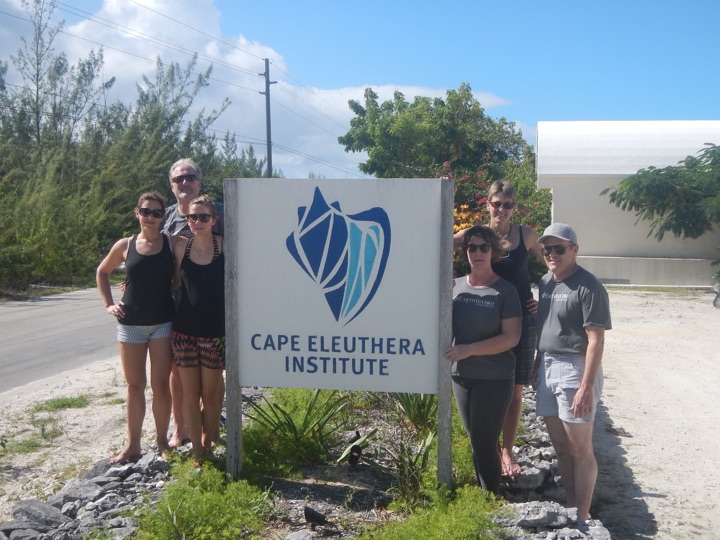
The Earthwatch team also got the chance to hear from other researchers at CEI about projects going on during nighttime presentations. These presentations varied from sustainable fisheries management to coral reef health and ecology.
A substantial amount of data was collected over the week, with 259 turtles spotted during abundance surveys across the creeks of South Eleuthera. We also had two record-breaking days in a row during abundance surveys, with exactly 127 turtles spotted, on both days, in Half Sound!
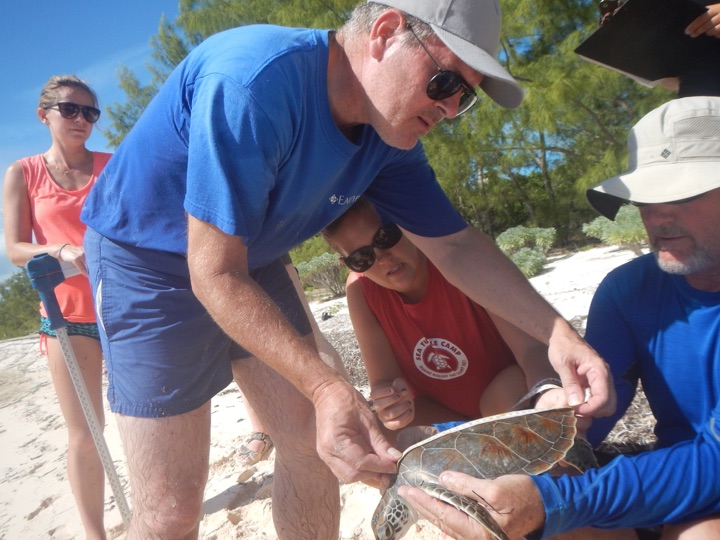
CEI’s Flats Team contributes to the science behind some of The Bahamas’ new marine parks
This year, 15 new marine parks were created in The Bahamas, bringing the country closer to their goal of protecting 20% of their coastal waters by 2020. The inclusion of several additions to the protected areas system, including The Marls of Abaco National Park, East Abaco Creeks National Park, and Cross Harbour National Park in Abaco, as well as the North Shore Gap National Park and the East Grand Bahama National Park, was influenced by bonefish research conducted in collaboration with CEI and other partnering institutions.
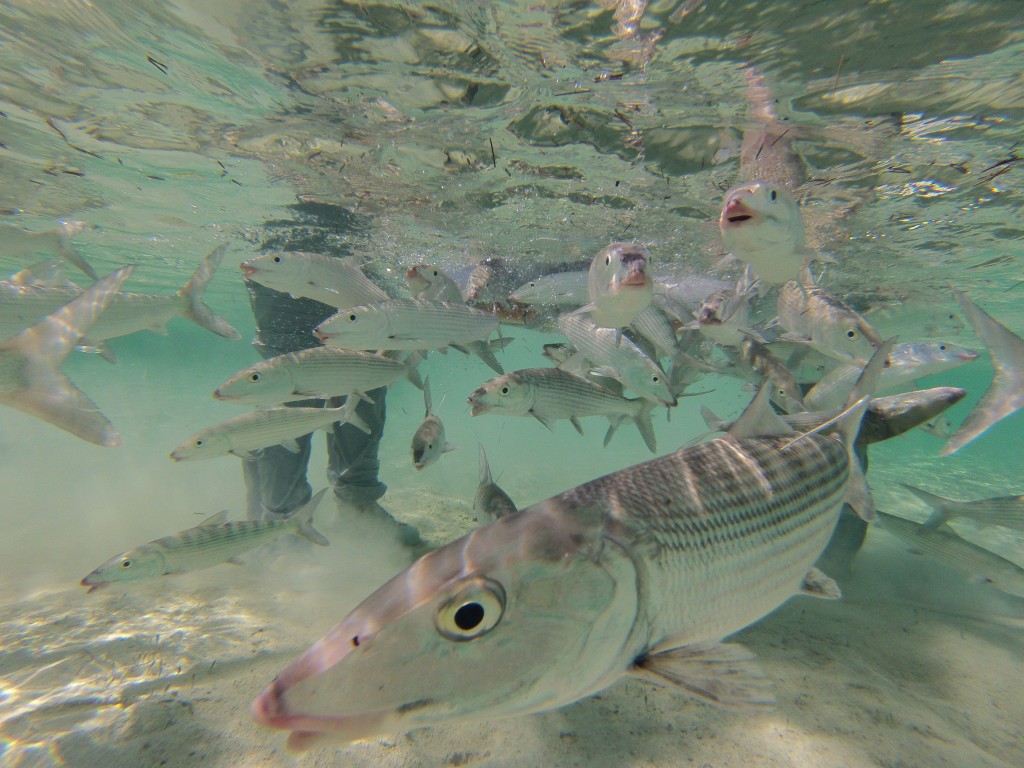
A busy week with The Island School Research Symposium and Parent’s Week
Last Thursday was The Island School Research Symposium! It is a highlight of Parent’s Week, and a time for parents to hear about the good work being done by their sons and daughters. Throughout the semester, The Island School students have collaborated with CEI researchers, contributing to ongoing research projects. They have been studying various ecosystems around Eleuthera, including inland ponds, the pelagic zone, the deep sea, shallow water sandbars, and tidal creeks .
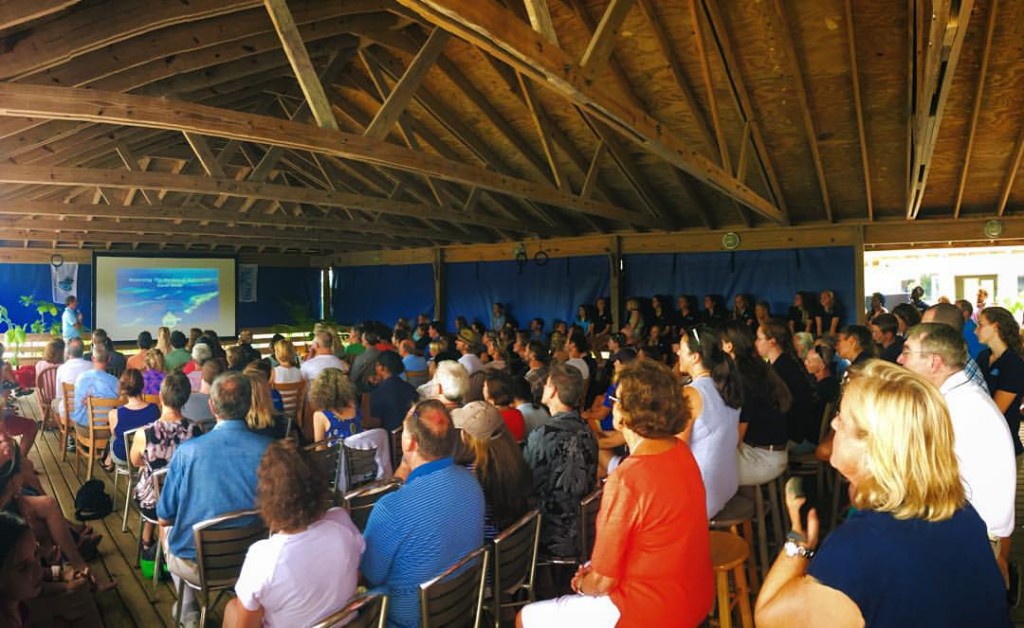
In all, nine projects were presented, and Dr. Craig Dahlgren, Senior Research Scientist for the Bahamas National Trust, concluded the event with a talk on the state of coral reefs in The Bahamas. All nine projects are being featured on our Instagram (@CEIBahamas) and Facebook pages, so please check them out for more details on the amazing research done this semester!
Stingray project update
Here at the Cape Eleuthera Institute (CEI), members of the Shark Research and Conservation Program are trying to unlock some of the many mysteries surrounding stingrays. Much like their shark ancestors, there are still many myths and misconceptions about these typically mild mannered creatures. Once believed to be nothing more than vermin on local reefs, scientists are now beginning to appreciate their true value as mesobenthic predators. Through a process called bioturbation, rays can alter ecosystems physically, chemically, and biologically. Often overlooked and underappreciated, these amazing animals play a vital role in maintaining a healthy marine ecosystem.
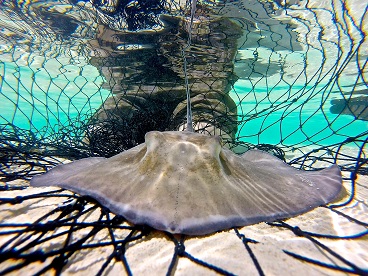
The CEI Stingray Project, led by Dr. Owen O’Shea, began in January of 2015, and is the largest study of its kind in The Bahamas. The purpose of this research on stingrays is to gain valuable baseline data regarding their habitat use, growth rates, behavior, daily activity budgets, genetic connectivity, demography and feeding preferences. Rays are caught via spot seining along local creeks, coasts and offshore sand cays and are measured, tagged, sampled for tissue and blood, and released. Together with the help of our Island School students, visiting Educational Programs and undergraduate students, Dr. O’Shea has caught 175 stingrays across both species, including 59 recaptured individuals.
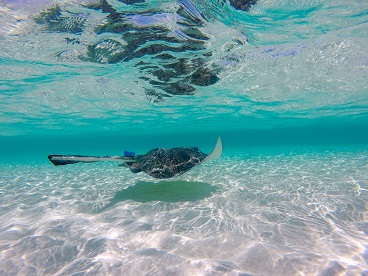
Since these rays occupy coastal and nearshore environments, it is believed they are actually more susceptible to anthropogenic impacts such as habitat loss and degradation and overfishing when compared to offshore populations of fish. It is critical that further research is conducted to learn more about these animals. This research will allow for the formation of a more solid knowledge base as well as an efficient conservation and management framework for both species and the habitats that support them.
